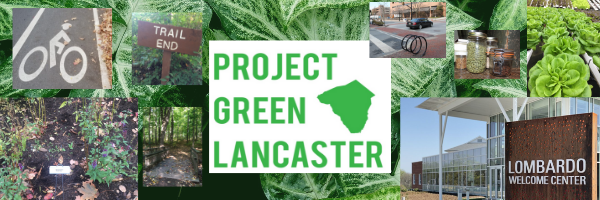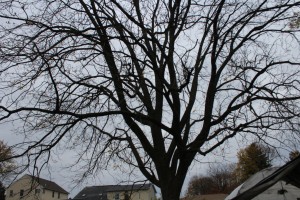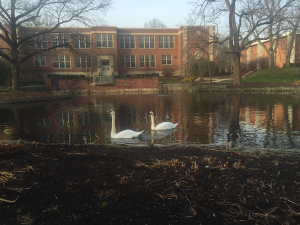
Photo by: Julie Florek
What do you think of when you hear of a community garden? Well to answer my own question a community garden is land gardened and taken care of by a group of people. The land is either individual or shared plots on private or public land. They encourage communities to use the garden as food security for the people in the are or to donate the food to those in need. Community gardens area great place for member of a community to get together and enjoy each other’s company and the thing that they have created. You can find these gardens almost anywhere, in the city, local schools, people’s backyards and much more.
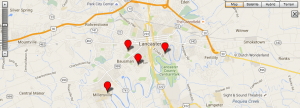 Right here in Lancaster County Pennsylvania we have many community gardens that people can go to, volunteer for or just visit. In our own back yard we have Lighten Up Lancaster County, Wheatland Community Garden, Lancaster Community Garden and Dig It.
Right here in Lancaster County Pennsylvania we have many community gardens that people can go to, volunteer for or just visit. In our own back yard we have Lighten Up Lancaster County, Wheatland Community Garden, Lancaster Community Garden and Dig It.
Start Diggin
Dig It is one of the more popular and well-known community gardens in Lancaster. It is on 618 Stevens Ave Lancaster PA. They have open volunteering every Monday, Wednesday and Saturday from 10AM – 2PM.

Photo by: Julie Florek
Other then just their open volunteering they have other events. Dig It holds an Urban Farm and Garden Summer Camp. The goal of their camp is to improve the health and welfare of children.The camp teaches kids about food and what is best for their bodies and minds. They grow their own nutrient rich organic food; they learn about, taste and sell their food.

Photo by: Julie Florek
Dig It also give people the opportunity to adopt a garden. Groups can adopt a small flower, herb or butterfly plot at Dig It. Your group can take care of that plot from May to October. If you decided to adopt you have to visit your plot 2 – 4 per month to maintain the plot (weed, water and mulch).
They also give the opportunity for community service. If you contact Dig It you can tell them when you are available to come in and set up a regularly scheduled volunteer time. For volunteering you must have a group of 8 or more people. To schedule volunteering or if you have questions about any of Dig Its events you can contact Director Saheeb Sabur at 717-473-371.
Coming Spring 2016

Millersville University Community Garden; Photo by: Julie Florek
Right now The School District of Lancaster is in the process of creating a new school garden; they are working with Millersville University to get the project up and running. We spoke with Professor Nadine Garner of Millersville University who is heading this project. Professor Garner is an Associate Professor of Psychology, the Director of the Center for Sustainability and the Chair of the Sustainability Committee. Professor Garner is also the head of this new project.
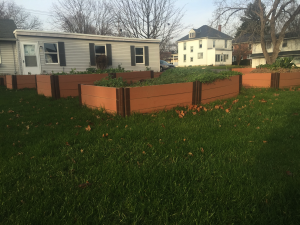
Millersville University Community Garden; Photo by: Julie Florek
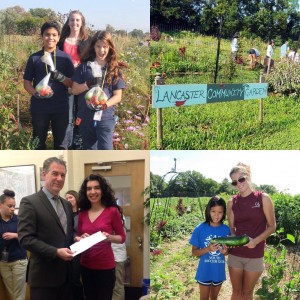
Photo by: The Center for Sustainability – Millersville University
This project started as an indoor community garden at the Wheatland Middle School. It was a small space where kids could come to garden during the winter and summer months. This project got so popular that they needed a larger space. Professor Garner and the Center for sustainability at Millersville University and the school district were able to come up with the funds to get a half an acre of land near the Middle School. Their half-acre is completely fenced in and will be open year round. They will be officially opening the new community garden spring of 2016. This garden is going to be used as a teaching tool to show kids how to grow their own food and eat properly. The food that they grow will get to go home with the kids and rest will be donated to local food banks. Professor Garner wanted to start these community gardens as a project to create food security for the kids of Lancaster.
Since this is all volunteer work, Professor Gardner is always looking for help. If you or someone you know would like to get involved, please send her an email at Nadine.Gardner@millersville.edu. Any contribution would be greatly appreciated.
Community is Important
Community gardens are very beneficial to communities that have them and use them properly.
- Creates a greater sense of community ownership and stewardship
- Develops community identity and spirit
- Brings people together from a wide variety of background.
- Its healthy and inexpensive activity to bring people together.
- Conserves recourses
- Simulates social interaction
- Beautifies neighborhoods and preserves green space.
- Creates opportunities for recreation, exercise, therapy and education.
- Encourages diversity and interaction
- People teach people
- Gives people the chance to share ideas and inspire each other
- Promotes interactions throughout many diverse cultures
People, plants and animals can all benefit from community gardens. As well community gardens are beneficial to both agriculture and the environment and the well being of the community it is in.
These gardens help the people in the community in many different ways. The big one is helping low-income areas and low-income families have access to nutritious food and are able to live a healthy life. This also inspires families to want to grow more food. Seeing a finished product gives families a sense of accomplishment and is a physical example of the good they have done for themselves and the environment. Gardens like these also create a stronger bond with the people in your environment. By creating these social ties to community they bring positive health effects and community involvement. Connections like these help to reduce crime; make people feel more powerful and give people the sense of freedom in their own community.
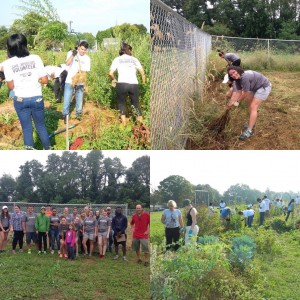
Photo by: The Center for Sustainability – Millersville University
Community gardens also help the environment. They help lower negative environmental impacts by promoting sustainable living. Having these gardens in your area helps improve the air and soil quality, they increase biodiversity of plants and animals. Being able to provide food for families reduces “food miles” because the food is not being transported. Community gardens create habitats and improve the ecology of the surrounding area.
The important thing is to realize that community gardens are more than just planting vegetables. The “community” in community gardens sometimes gets forgotten. With the help of generous volunteers and passionate people, a place like Lancaster City is becoming more and more green. It is helping shape the values of local youth as well. Lancaster is very clearly a diverse place. Where there is diversity, there may sometimes be issues with fitting in a mixing of cultures. Community gardens allow these children to interact with people of all walks of life, and it uses the idea of sustainability and gardening to bring people together.
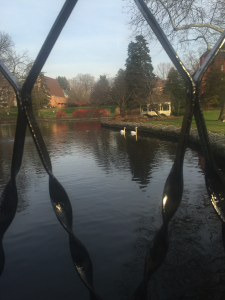
Photo by: Julie Florek
Community gardens benefit the area in more ways than one. Anyone who wishes to help should get involved however they can. The impact it can create lasts much longer than the produce that is grown. If we can all inspire one person to make a green decision the world can become a better place. All it takes it a chain reaction and a little inspiration to achieve this goal. Community gardens are something I would recommend to anyone who wishes to get involved with sustainability or even just a fun weekend activity. There is something for everyone when it comes to Community Gardens.
